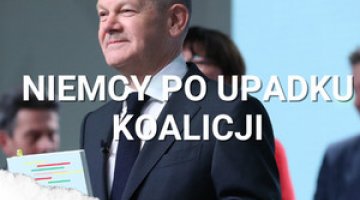The H2Global Foundation: an instrument of Germany’s external hydrogen policy
In 2022, the German hydrogen foundation H2Global will begin full-scale operations. The go-ahead comes after the European Commission confirmed on 20 December 2021 that its model complies with EU regulations on state aid, and after receiving €900 million from the Federal Ministry for Economic Affairs and Climate Action on 23 December for the implementation of its statutory goals. The main tasks of the foundation, which was established in June 2021, involve covering part of German industry’s future import demand for hydrogen and products based on it (on the Power-to-X [PtX] principle), and accelerating the construction of an international market for these energy carriers. The project is aimed at countries which are outside the European Union and do not belong to the European Free Trade Association.
The concept for the foundation’s operation was developed, at the request of the federal government, by the German Corporation for International Cooperation (Deutsche Gesellschaft für Internationale Zusammenarbeit, GIZ) and the German Hydrogen and Fuel Cell Association (Deutsche Wasserstoff- und Brennstoffzellen-Verband, DWV). H2Global is intended to cover the difference between the higher price (at least in the initial period) for the production of green hydrogen and products based on it (caused by the small scale of production, among other factors) and the lower price at which the German industry is ready to buy it. The double auctions mechanism will serve to correlate the prices of supply and demand; these auctions will be conducted by a specially established company, the Hydrogen Intermediary Network Company (Hint.Co), in which the foundation will own 100% of the shares.
The supply-side activities will involve auctioning 10-year hydrogen purchase agreements for the production and delivery of green hydrogen or ammonia, methanol or synthetic fuels based on it, to Germany or other EU countries. The auctions will be open to consortia operating in the project’s partner countries, and the lowest bids will win. The supply contracts’ long period is intended to make the planning of investments in production installations secure, and to enable capital to be raised on the financial markets. The Hint.Co broker will conclude the contracts and purchase the contracted products.
On the demand side, auctions for short-term contracts (hydrogen service agreements), for example one year in duration, will be held. Companies from various industries (including the metallurgical, chemical and refining branches) will be able to submit their demand and price offers there. The offers with the highest price will be selected, and the broker will resell the contracted products to the winning entities. Thanks to the short-term contracts, a flexible response to market developments on the demand side can be guaranteed. The difference between the higher production price and the lower purchase price will be covered by Hint.Co on the basis of the differential contracts from funds from the federal budget. The €900 million provided for this purpose by the Federal Ministry for Economic Affairs and Climate Action is intended to cover a 10-year period.
From the formal side, the founders (and beneficiaries) of the foundation are representatives of German industry which are interested in the development of the global hydrogen economy and their future expansion in this field. They currently include 18 entities, including energy companies (RWE, Uniper, Enertrag), technology suppliers (Siemens Energy, Linde, MAN Energy Solutions, Air Liquide, Hydrogenious LOHC Technologies) and industry (Salzgitter, ThyssenKrupp). They represent the entire value chain, from production, through transportation, to the use of hydrogen. These companies will cover the foundation’s operational costs.
H2Global will also be responsible for formulating the rules for holding auctions, supervising their course, and meeting the standards set by the Ministry regarding, for example, the hydrogen’s origin. The federal government will be represented on the foundation’s council. The first auctions will take place in 2022, and the deliveries contracted under this mechanism will begin in 2024. The authors of the concept estimate that thanks to the foundation, Germany will be able to receive around 40,000 tonnes of hydrogen annually.
Commentary
- The new SPD-Green-FDP coalition announced that it would speed up the energy transition process in Germany. The implementation of the more ambitious emission reduction targets adopted in 2021 (by 65% by 2030, 88% by 2040, and carbon neutrality by 2045) will require the faster replacement of fossil fuels, for example by hydrogen or PtX products. To this end, the government of Olaf Scholz has announced an amendment to Germany’s hydrogen strategy: the new coalition will aim to achieve 10 GW of domestic electrolyser capacity by 2030 (the current plan assumes 5 GW). The implementation of hydrogen projects (relating to the production, transport and use of hydrogen in industry, mainly steel) under the IPCEI programme and the creation of a national hydrogen network are also to be accelerated. The new government is also expected to intensify ‘hydrogen diplomacy’, which (along with external climate policy) is now to be implemented by foreign minister Annalena Baerbock (Green). The H2Global foundation is to be supervised by Robert Habeck (Green), the vice-chancellor and minister of economic affairs and climate action, who is also responsible for industry. The foundation will play an important role in the new cabinet’s plans; the coalition agreement announced an increase in the scale of its operations, as well as efforts to implement this (or a similar) instrument at the EU level.
- H2Global is an important tool for the implementation of Germany’s hydrogen strategy (see ‘The German hydrogen strategy: green hydrogen in the spotlight‘) in the external dimension. Hydrogen (and PtX products) is seen in Germany as a key element in the decarbonisation of the economy: it is considered indispensable to these plans, especially in industry and transport (air, sea and heavy-duty road transport). Germany, which has chosen to use green hydrogen, cannot meet the demand for it from domestic sources, and will be permanently dependent on its import. The strategy estimates the domestic consumption of hydrogen in 2030 at 90–110 TWh, and its own production capacity at a mere 14 TWh (if the planned capacity of the domestic electrolysers, proposed by the new government, is doubled, this would still amount to only 28 TWh). In order to guarantee supplies, Germany’s priority is to build European production capacities and a hydrogen transport (gas pipeline) infrastructure. Its partners will mainly be the Netherlands, Belgium, Denmark and Norway, as well as Ukraine and Russia. Most of the imports should come from these countries by the end of the decade. In the longer term, a significant proportion should also be covered by supplies from countries outside Europe, which, due to the very favourable conditions for RESs, will likely offer the lowest costs for producing green hydrogen. H2Global is intended to facilitate the establishment of early cooperation with these countries. Since 2020 Berlin has been concluding hydrogen partnerships with potential exporting countries, in which the foundation has played a very important role: it may facilitate the launch of the first projects by local companies with German partners. These countries include Australia, Chile, South Africa, Namibia, the United Arab Emirates, Saudi Arabia, Morocco, Tunisia and Ukraine.
- German industrial circles have high hopes for H2Global. Berlin has made no secret of the fact that – in addition to ensuring import sources for Germany – an equally important goal behind the foundation’s creation is the promotion of German hydrogen technologies, which will most likely predominate among the projects submitted for the production of hydrogen in third countries. For months now, companies from Germany have been involved in setting up the first demonstration installations with financial support from Habeck’s Ministry (such as ThyssenKrupp’s projects in Saudi Arabia, and Siemens Energy’s in Chile), as well as the formation of consortia with partners from potential export countries (such as the one between Linde & Enertrag and Sasol from South Africa); such consortia can take part in auctions organised under the H2Global mechanism. German suppliers of hydrogen technologies are hoping that these projects will enable them to gather essential experience, show off their know-how, and make the business contacts which will aid their expansion onto the new markets (see ‘Wodór – nadzieja niemieckiej polityki klimatycznej i przemysłowej‘ [‘Hydrogen – the hope of German climate and industrial policy’]). For the future recipients of hydrogen and PtX products in Germany (e.g. in the chemical or refining industries), the foundation mechanism, in turn, offers an opportunity to establish cooperation with potential producers and guarantee early supplies of the necessary energy carriers. German business representatives have emphasised that ensuring their availability is one of the basic conditions for planning investments in new, low-emission technologies.
- There is no certainty that the H2Global model will live up to expectations. The idea of using the double auction mechanism is a new instrument, the effectiveness of which has not yet been tested in the market environment. In addition, hydrogen technologies (both for the production of green hydrogen and its use in production processes) are still at an early stage of maturity; projects involving their use on a large-scale industrial scale have not yet been implemented, and the market is still in the development stage. It is not yet possible to estimate how many consortia producing hydrogen and its derivatives will be created; what the costs of the entire procurement will be, including the prices at which the products will be offered; or how many auctions can be covered by the funds allocated. There are also doubts about the methods and costs of transportation. Initially, the contracts will probably mainly concern PtX products (ammonia, methanol or synthetic fuels) as they are easier and cheaper to transport than hydrogen itself. This is the context in which Uniper’s plans to create an ammonia terminal in Wilhelmshaven should be seen (Belgian and Dutch ports have also offered themselves as potential recipients of supplies to Germany from overseas). Finally, it is difficult to estimate to what extent the proposed mechanism will actually contribute to the development of the global market for green energy carriers.




